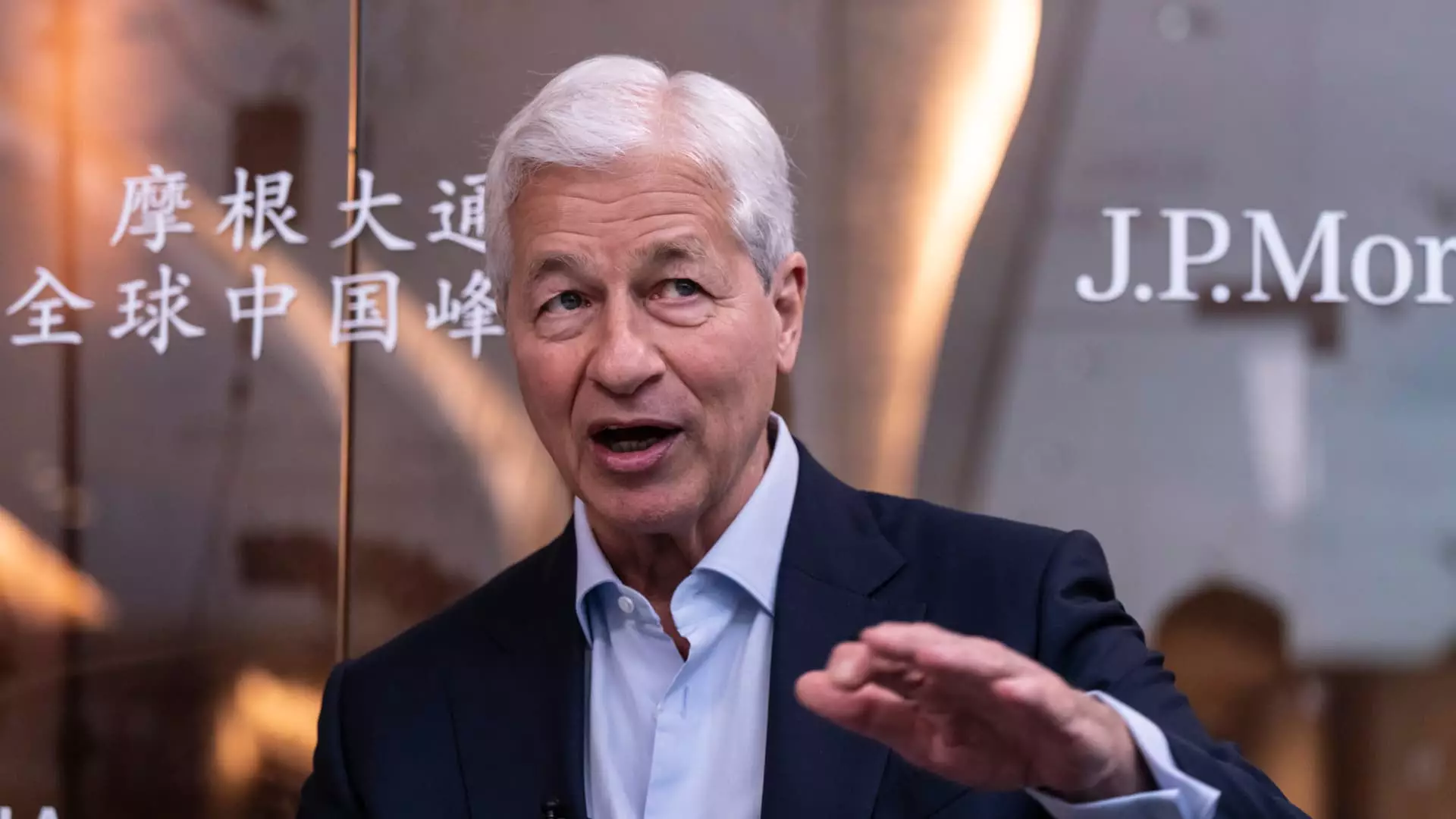In the complex world of financial services, timing can be everything. Once perceived as laggards in the realm of online investment platforms, JPMorgan Chase is now ambitiously positioning itself as a trailblazer. With a recent announcement to unveil cutting-edge tools for bond and brokered CD purchases via its mobile app, the bank aims to reshape the market landscape. However, this newfound confidence raises critical inquiries about whether JPMorgan can genuinely compete with its entrenched rivals like Charles Schwab and Fidelity. Are the tools they’re offering groundbreaking, or simply catching up to an already saturated market?
Innovation or Imitation? The Complexity of User Experience
At the heart of JPMorgan’s latest move is the promise of a significantly enhanced user experience—customizable screens for researching bonds, direct comparisons of yields, and seamless integration with existing banking features. Paul Vienick, head of online investing, stated that the goal was to streamline the purchasing process for fixed-income products as effectively as stocks and ETFs. But one can’t help but wonder: is this truly innovation or merely an imitation of what has long been established by other online trading platforms?
The core of the issue lies in how invested users feel in the JPMorgan platform. While the visual aesthetics and ease of navigation may entice entry-level investors, real engagement hinges on the depth of information and analytical tools available. Will this initiative genuinely meet the evolving demands of tech-savvy users who expect robust analytics, or will it fall short, similar to their lackluster “You Invest” platform from 2018? When examining JPMorgan’s previous experiments with online investing, skepticism is valid.
A Struggle Against Competitors with Established Legacies
JPMorgan Chase claims the title of the largest bank in the U.S., yet when facing competitors like Schwab, E-Trade, and Fidelity, they are dwarfed in both market presence and user trust. Having just crossed the $100 billion threshold in assets under management, it is essential to confront the stark reality that this figure pales in comparison to the multi-trillion dollar portfolios held by long-time incumbents. Overcoming this stark disparity will not be an easy feat but is pivotal if JPMorgan is to make a mark in the crowded arena of self-directed investing.
It’s apparent that the ambitious goals set by the bank require more than simply rolling out new features; they necessitate a complete cultural and operational overhaul. Hiring industry veterans like Vienick is a commendable step, yet the question lingers: can such moves change the perceptions of investors who have long relied on rival platforms? Given the legacy of these competitors, earning customer loyalty will be a Herculean task.
The Target Audience: Understanding Investor Psychology
A critical factor in JPMorgan’s strategy appears to be its focus on “engaged investors,” those who actively participate in their financial decisions multiple times a month. This demographic often seeks direct purchases of bonds rather than relying on mutual funds, implying a level of sophistication and autonomy that the bank must respect and cater to. Offering incentives like cash bonuses for shifting funds to their self-directed platform might attract interest initially, but the long-term retention of these clients will depend significantly on whether JPMorgan’s platform meets the nuanced needs of these investors.
It must also be recognized that many individuals employing financial advisors utilize online tools for their trading activities. This duality presents an opportunity and a challenge for JPMorgan. Their traditional banking services must be effectively integrated with online investing tools, offering a holistic view of customers’ financial landscapes. In an age where instant access and fluidity between accounts reign supreme, failure to deliver on this will alienate potential loyal clients.
The Confidence vs. Reality Divide
There’s an undeniable conviction emerging from JPMorgan Chase, particularly from figures like Jamie Dimon, who insists that their self-directed business holds the potential to become a trillion-dollar venture. However, such aspirations need to be tempered with realism. The road ahead is riddled with obstacles that extend beyond mere technological innovation. There is a requisite cultural shift that must occur within the organization, along with extensive market education to ensure that customers are not just aware of the offerings but are genuinely engaged.
Moreover, the vast branch network and solid balance sheets of JPMorgan are undoubtedly assets, but they cannot solely prop up their ambitions. The firm must embed itself in the fabric of the digitally-savvy investor’s daily life—leveraging both technology and person-to-person interaction to build trust and rapport. Navigating these complexities is crucial for their hoped-for dominance in the online investing sector.
While JPMorgan Chase’s aspirations are commendable, realizing this vision will necessitate unwavering commitment, a keen ear to investor feedback, and perhaps most crucially, a willingness to evolve continuously in a rapidly changing financial landscape.


Leave a Reply